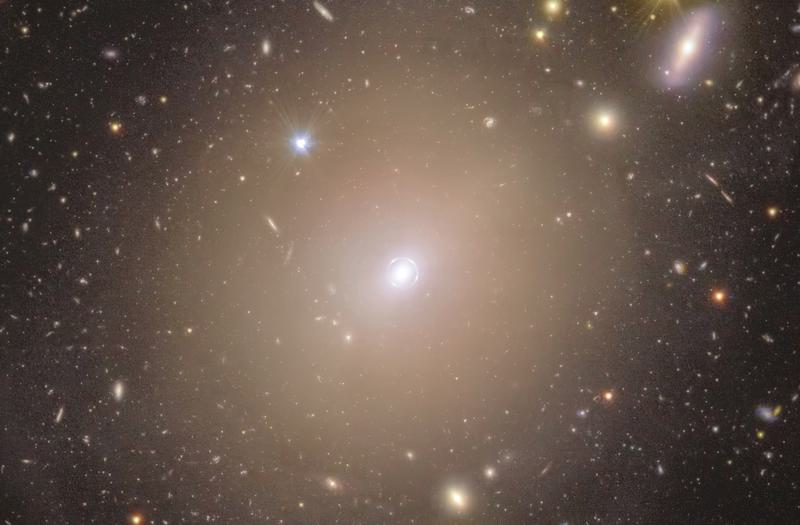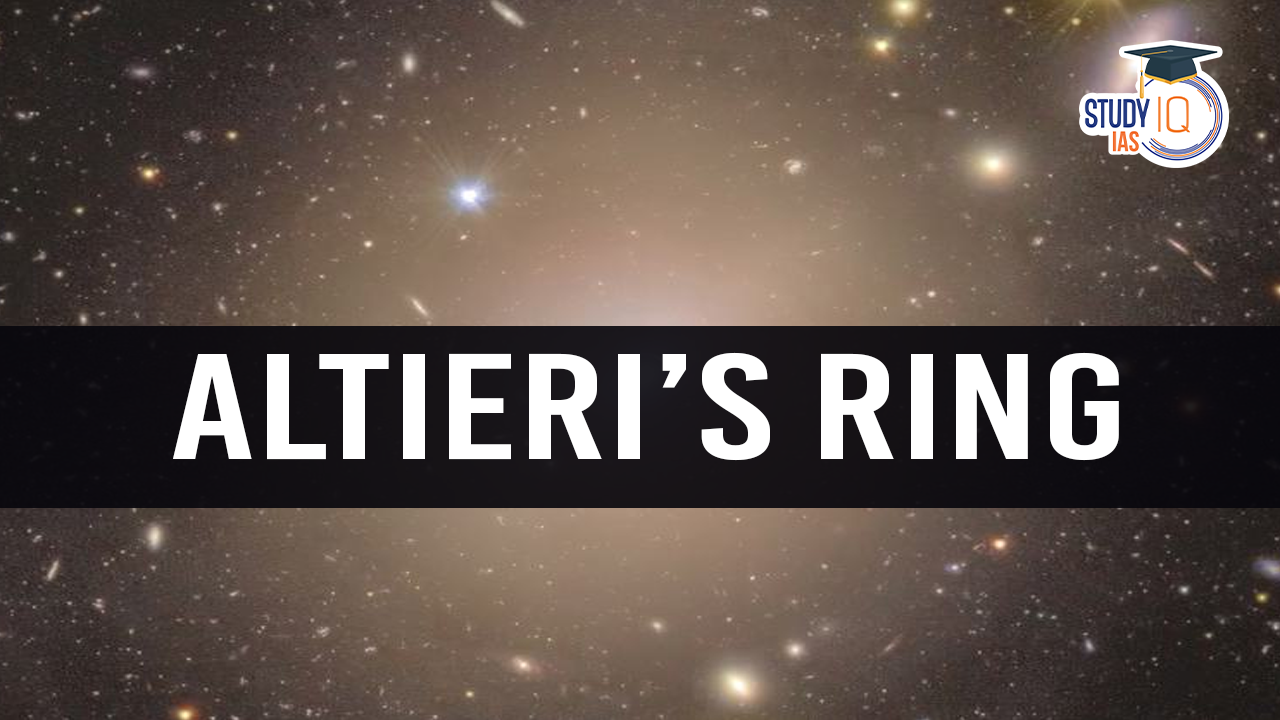Table of Contents
Context: The Euclid space mission of the European Space Agency (ESA) recently spotted an Einstein ring (named Altieri’s Ring).
About Altieri’s Ring
- In September 2023, the Euclid space telescope found an Einstein ring in a nearby galaxy called NGC 6505, which is 590 million light-years away.
- It was discovered by the astronomer Bruno Altieri in an early test image, and later, clearer images confirmed its existence.
- The ring was named Altieri’s Ring in his honor.
- This ring is actually the distorted image of another galaxy 4.5 billion light-years away.

Significance of Altieri’s Ring Discovery
- Altieri’s ring is special because it was found in NGC 6505, a well-studied nearby galaxy that has been known to astronomers since the 19th century.
- Only five other gravitational lenses have been found at similar distances from Earth.
What is an Einstein Ring?
- An Einstein ring is a rare ring of light that forms due to gravitational lensing.
- Gravitational lensing occurs when a massive celestial object (a galaxy or cluster of galaxies) creates a gravitational field that bends and magnifies the light from a distant object behind it.
- This was predicted by Albert Einstein’s General Theory of Relativity (1915), which stated that gravity can bend light around massive objects.
- An Einstein ring forms only when the background galaxy, the lensing galaxy, and Earth align perfectly.
- The first Einstein ring was discovered in 1987, and though more have been found since, they remain extremely rare.
- Less than 1% of galaxies are estimated to have an Einstein ring.
- Einstein rings are not visible to the naked eye and can only be observed using advanced space telescopes like ESA’s Euclid.
| Euclid Space Mission |
|
Why Scientists Study Einstein Rings?
- Understanding Dark Matter: Dark matter makes up 85% of the total matter in the universe, but it has never been directly observed.
- Gravitational lensing helps indirectly detect dark matter by observing how light bends around galaxies.
- Studying Distant Galaxies: Some galaxies are too faint to be observed directly. Gravitational lensing magnifies their light, allowing scientists to study galaxies that would otherwise remain hidden.
- Measuring the Expansion of the Universe: The universe is expanding, stretching space between Earth and other galaxies.
- Einstein rings provide data on how fast galaxies are moving apart, helping refine measurements of cosmic expansion.


 Advanced Air Defence Radars: Types, Comp...
Advanced Air Defence Radars: Types, Comp...
 Ion Chromatography, Working and Applicat...
Ion Chromatography, Working and Applicat...
 Broadly Neutralising Antibodies (bNAbs):...
Broadly Neutralising Antibodies (bNAbs):...

























